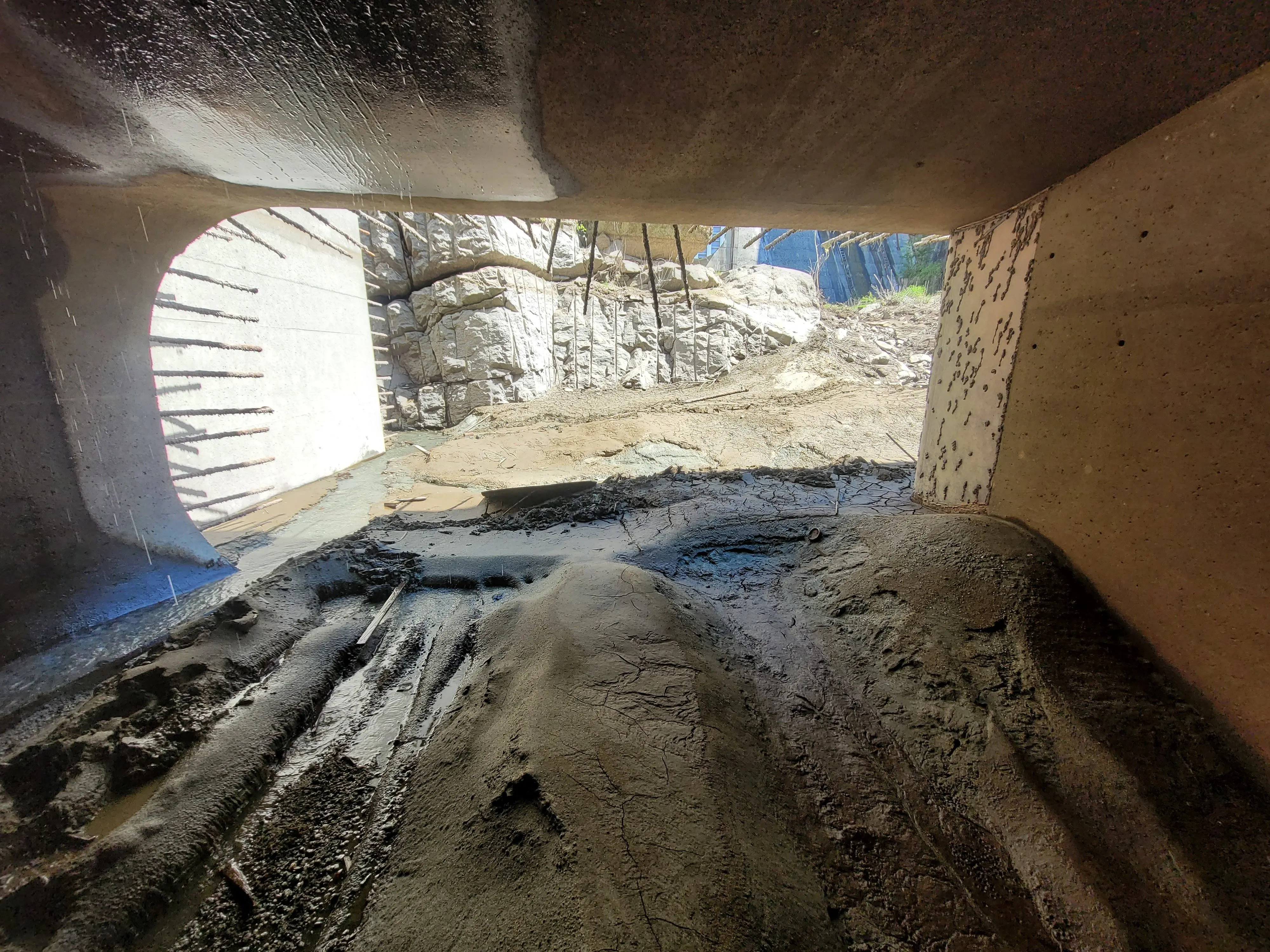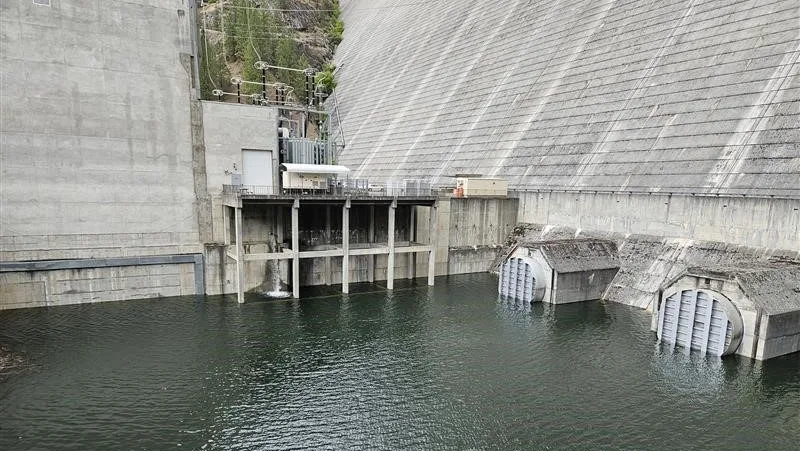
AHSAHKA, ID – On the banks of the North Fork Clearwater River, a new chapter is being written for one of the Pacific Northwest’s most important hydropower resources. The U.S. Army Corps of Engineers (USACE) Walla Walla District, in partnership with the Bonneville Power Administration (BPA), has taken a key step toward expanding the Dworshak Dam powerhouse with a fourth generating unit.
In July 2025, USACE engineers flooded the “skeleton bay,” an empty turbine bay constructed alongside the existing three units more than 50 years ago, for the first time. This flooding was part of initial design work to test draft tube bulkheads and assess how the space could be converted into an operating hydropower unit.
When Dworshak Dam was authorized in 1962 and completed in 1973, engineers built the massive powerhouse with room for six units but installed only three. Today, Dworshak operates with a total capacity of 450 megawatts (MW), including USACE’s largest single generator at 250 MW.
The idea of a fourth unit resurfaced in the 2010s as demand for reliable, renewable power grew. Congress reauthorized the concept in the 2014 Water Resources Development Act, and a feasibility study concluded in 2019. In January 2025, design work officially began.
“The addition of a fourth hydropower unit at Dworshak will provide significant power generation and grid stability benefits as well as risk reduction for both generation and environmental concerns,” said Kara Morgan, USACE Senior Project Manager. “We’re in the early design phase now, and we anticipate 3–4 years of design, followed by 5–7 years of construction, with completion expected by Fiscal Year 2036.”
Unlike allocating a new space for an additional turbine, Dworshak has the advantage of extensive infrastructure already in place. During original construction, engineers installed a penstock, intake gate, bulkheads, cranes, drainage systems, and other equipment designed to one day support an additional turbine.
“Many systems in the existing powerhouse will only need to be expanded to accommodate the new unit,” Morgan explained.
The proposed unit will add 250–300 MW of capacity — enough to power more than 200,000 homes. That additional output will allow Dworshak to move more water through its powerhouse rather than spilling it over the dam, reducing Total Dissolved Gas (TDG) levels in the river and benefiting downstream fish.
While Dworshak Reservoir already plays a key role in providing cool water to support salmon and steelhead migrations on the Lower Snake River, adding Unit 4 would increase the dam’s operational flexibility to meet those needs while minimizing TDG and other impacts.
“Installation of a fourth unit would provide redundancy to mitigate the loss or forced outage of Unit 3 as well as provide significant power generation and grid condensing benefits,” Morgan said. “It will also allow engineers to reevaluate how we refill the dam in the spring, potentially reducing spill caused by changing weather patterns.”
The project delivery team plans to conduct a full Environmental Impact Statement (EIS) and Biological Assessment starting in 2026, with consultations under the Endangered Species Act and Clean Water Act. Early studies found that a fourth unit could provide net benefits for fish by reducing reliance on spillways.
BPA shares that perspective. “In addition to improving reliability of generation from Dworshak, there are significant water quality benefits,” said Doug Knapp, BPA’s project representative to the Walla Walla District. “During spring runoff and summer temperature augmentation, the additional unit greatly reduces the need to spill water, which adds dissolved gas to the river. Being able to pass water primarily through the powerhouse will improve water quality and be a significant benefit to the ecosystem.”
Like other hydropower projects within the Walla Walla District, hydropower’s ability to respond instantly to changing grid conditions is one of its greatest strengths. Unlike other renewable energy sources, hydropower units can ramp up or down in minutes, providing stability during peak demand or unexpected outages.
“The value of Dworshak power is especially high in the summer when the rest of the system is constrained by spill requirements,” Morgan said. “Unit 4 adds resiliency to the powerhouse and helps us maintain generation capacity even during equipment downtime or major repairs.”
Knapp emphasized the broader benefits to BPA’s mission. “Unit 4 at Dworshak will play an integral role in meeting the region’s energy needs and our effort to integrate generation from a variety of renewable sources,” he said.
“Other potential benefits include construction labor sourced from local communities as well as the economic boost from logistical and support services,” Morgan said.
Collectively, USACE operates 75 hydropower plants with 356 generating units nationwide, producing more than 70 billion kilowatt hours annually, about 25% of the nation’s hydropower.
“USACE has not added a new hydropower turbine to the power grid in many years,” Morgan reflected. “The opportunity to lead efforts to design and construct one of this size is a unique challenge — and when complete, it will be a source of pride for the entire District. I look forward to taking my future grandchildren to Dworshak and showing them the value of clean, renewable energy, and the role hydropower plays in reducing reliance on fossil fuels.”
For more information on Dworshak Dam and Reservoir, visit: https://www.nww.usace.army.mil/Locations/District-Locks-and-Dams/Dworshak-Dam-and-Reservoir/
